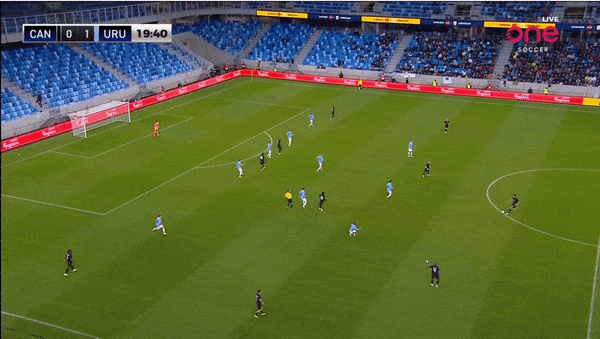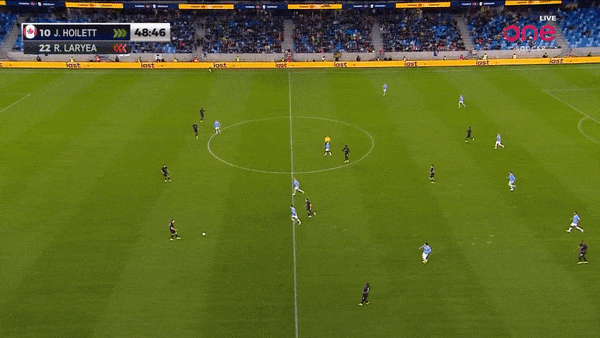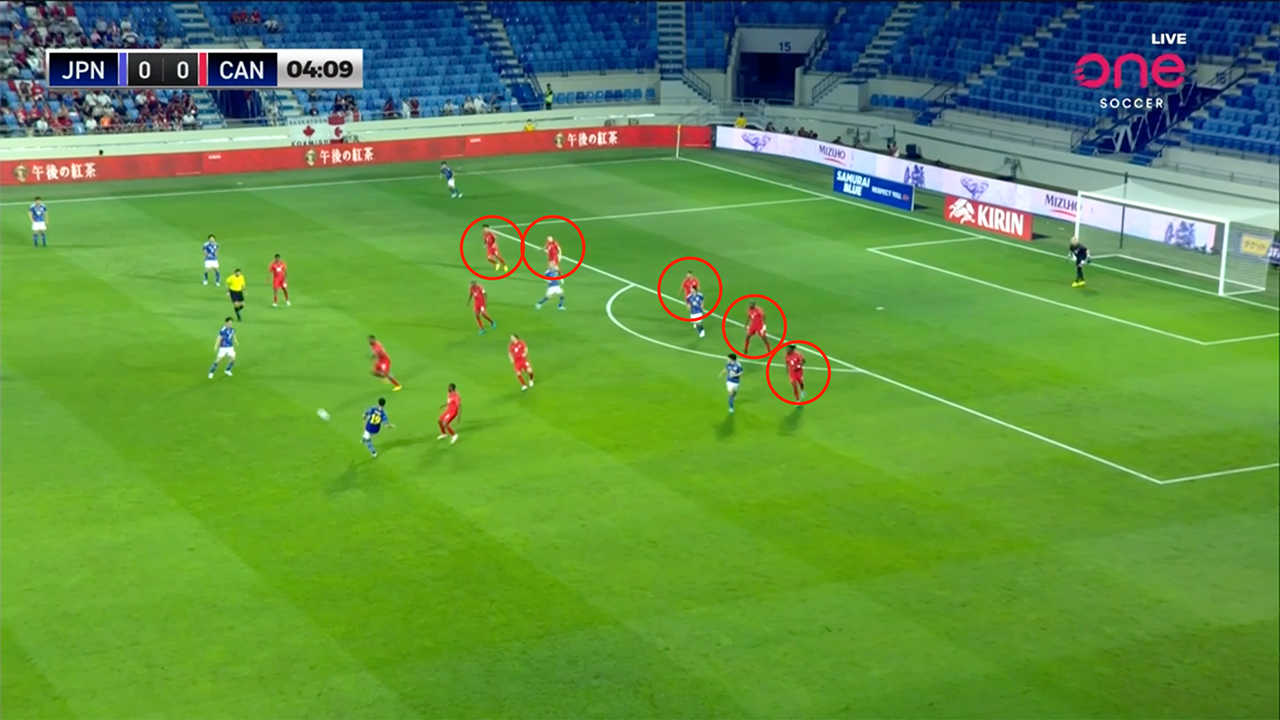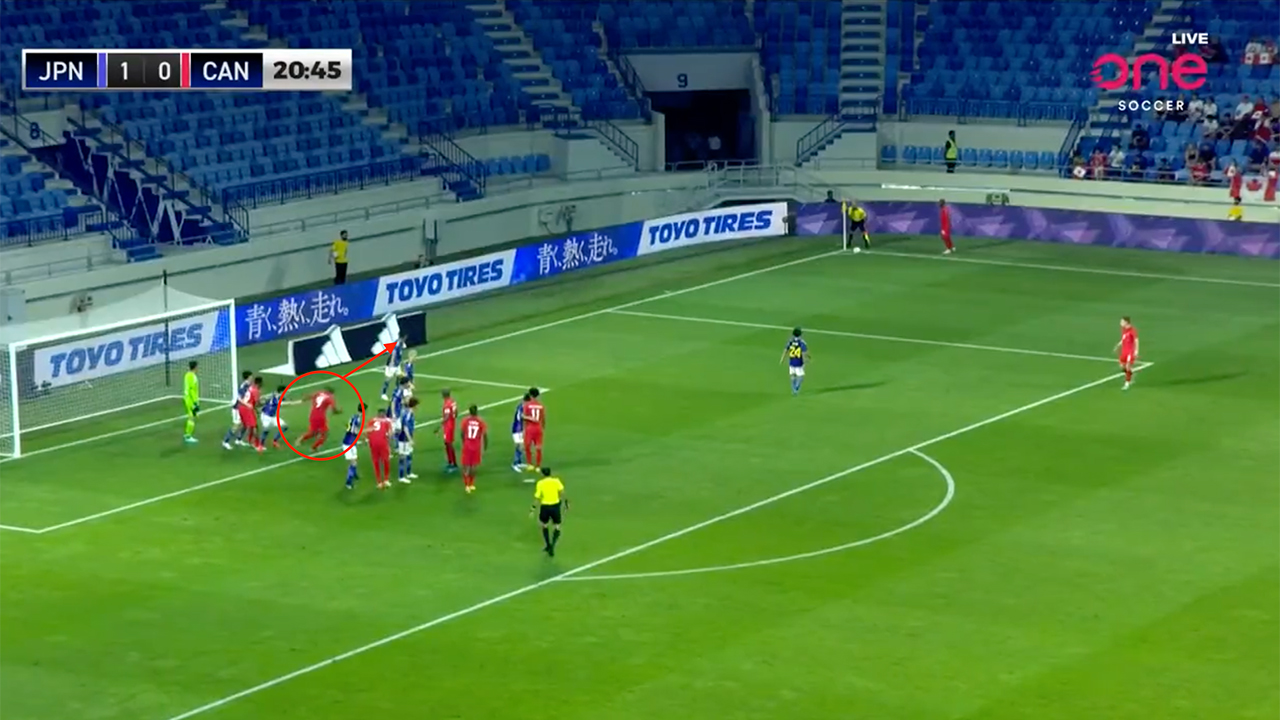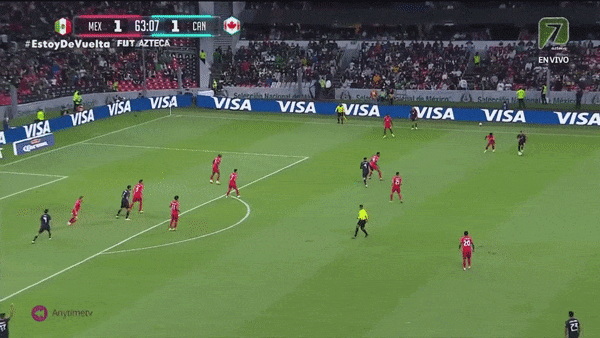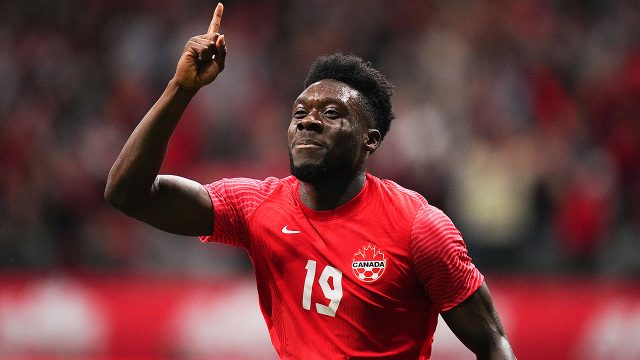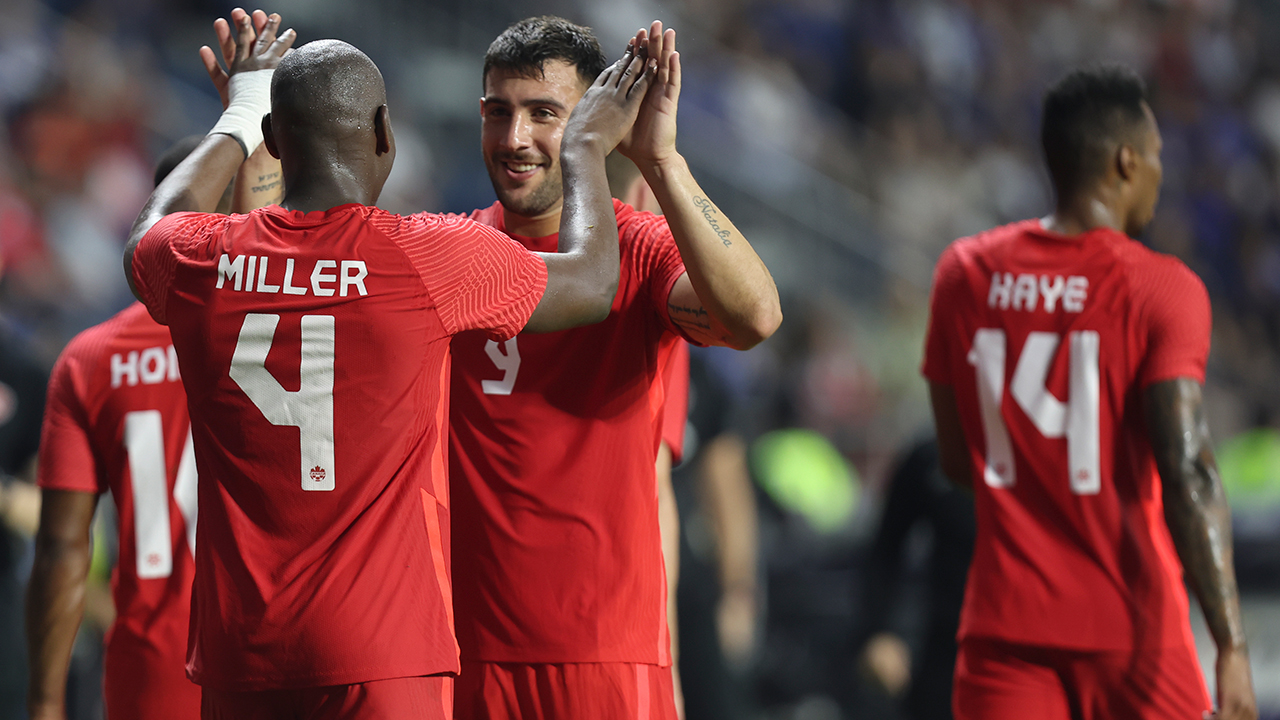
It might not have been Japan’s full-strength squad, but a win is a win for the Canadian men’s national team, especially victories of this magnitude.
Considering what transpired in September against Uruguay, there were a lot of positives to take from the 2-1 friendly win over the Japanese on Thursday in Dubai.
However, there are still a couple of concerns that could haunt Canada if they aren’t corrected immediately.
With the team’s World Cup opener against Belgium just six days away, here’s what we learned about Canada in their final tune-up match.
TRANSITION DEFENCE IS INTACT
One of the major takeaways from the 2-0 loss to Uruguay in September was Canada’s poor transition defence. The double pivot of Samuel Piette and Stephen Eustaquio wasn’t quick or organized enough to handle the fluid Uruguayan buildup through the middle, and it left Canada’s defence exposed.
Atiba Hutchinson wasn’t available, either, which meant Canada lacked a composed orchestrator to help build from the back against Uruguay’s high press. Steven Vitoria was often the player tasked with that responsibility and was frazzled every time.
Even this seemingly straightforward pass from Vitoria left Alistair Johnston in a spot of bother.
Thankfully, Hutchinson returned to the Canadian camp and started versus Japan despite playing just 70 minutes for Besiktas all season due to injury. That lone start occurred last week in a Turkish Cup match against third-tier Serik Belediyespor
Despite the long layoff, Hutchinson filled an immediate need. He completed 38 of his 41 passes, provided an outlet for Vitoria and helped the team play through pressure on several occasions.
Plus, Hutchinson dropping into the back line in possession enabled Johnston to replicate his role with CF Montreal as an attacking wingback, so he didn’t have to worry about tracking back as quickly.
Canada did pick its spots, too. If a short option wasn’t available or deemed risky when Japan committed bodies forward, Les Rouges opted for a long ball.
Winning the second balls will be crucial to that strategy working, otherwise the defence will be under duress far too often at the World Cup.
But Canada remained compact off the ball, either in a 4-4-2 shape, or 5-3-2 depending on how far Japan progressed the ball into the final third. There was very little space to play through compared to the Uruguay friendly.
“All I was interested in was the performance,” Canada coach John Herdman said after the match. “I needed to see that this group of men could bring that identity to a team like Japan, who technically is one of the best 20 in the world, that’s where they sit. And we’re missing some key players.”
Eustaquio was rested as a precaution
Japan opted to rest as many as seven likely World Cup starters in this game, so this wasn’t the best lineup. However, the tactics are consistent for the Japanese. They play quickly and fluidly while pressing aggressively from the front. Canada coping, and winning, is a positive sign looking ahead to the World Cup.
HOILETT TO START VS. BELGIUM?
This was likely to happen anyways, but Junior Hoilett left no doubt he should start against Belgium.
Earning his 50th cap for the national team, Hoilett logged four key passes and provided the delivery from the corner for Vitoria’s equalizer.
But it was more than Hoilett’s set pieces that caught the eye. His uncanny ability to manoeuvre through tight space, while under pressure, and progress the ball is so vital in matches of this magnitude. The more players Canada has who are comfortable on the big stage, with the pace of play cranked up to 100, the better.
To bolster his case even further, Hoilett was defensively diligent. He completed three tackles and had a couple of excellent recoveries off Japanese defenders high up the pitch to create dangerous counter-attacks for Canada.
Coaches love forwards who are defensively engaged, so that’ll only help the 32-year-old’s case to start next Wednesday.
SET-PIECE STRENGTHS
If we go back and analyze Vitoria’s goal, there was a noticeable trend watching Canada’s attacking set pieces.
The sequence began with Kamal Miller running towards the near post, dragging three Japanese defenders with him.
With Miller pulling those three defenders away, that left a gap. Cyle Larin then ran around Tajon Buchanan (No. 11) and darted into that open space vacated by Miller.
Larin missed the initial header once Hoilett delivered, but with defenders occupied with the Canadian forward, Hutchinson was free to hit the ball, which was eventually bundled in by Vitoria.
Those near-post decoy runs were consistently utilized by Canada, and Japan couldn’t contain them. Goalkeeper Shuichi Gonda was uncomfortable dealing with the whipped crosses into the box.
Belgium goalkeeper Thibaut Courtois, a six-foot-six human octopus, likely won’t have the same issue. But if Hoilett can provide crosses that are aimed away from Courtois’ six-yard box, this can work just as effectively.
AERIAL DEFICIENCIES REMAIN
For all the good that Canada provided in the air, the aerial weaknesses at the back persisted on Thursday.
Miller was burned via a lofted ball over the top for the opening goal from Yuki Soma, and that’s often been a troubled area for the CF Montreal defender.
Ditto for Johnston. As remarkable as he’s played for Canada, aerial duels aren’t his strong suit, either. Mexico tried to exploit this during Concacaf World Cup Qualifying last October.
Mexico’s goal in that same match was eerily similar to Japan’s, too.
Expect similar treatment from Belgium, Croatia and Morocco unless Vitoria is around to ensure there isn’t an easy target.
BUCHANAN-JOHNSTON REUNITED
Luckily for Johnston, his best qualities were on display against Japan. Thanks to Hutchinson’s return, the 24-year-old largely played a wingback role and managed some sublime passes.
Most of those balls fell at Buchanan’s feet. The duo was fantastic in June’s victory over Curacao, although there was an asterisk due to the quality of the opponent.
No such thing on Thursday, though. Sure, Buchanan couldn’t produce that final ball but his pace clearly troubled Japan’s defence and kept it on its toes. Johnston’s outlet passes are also a reliable weapon if Canada needs to break opposition lines.
With Alphonso Davies likely garnering most of the attention on the left, the right side could flourish without much spotlight at the World Cup.


